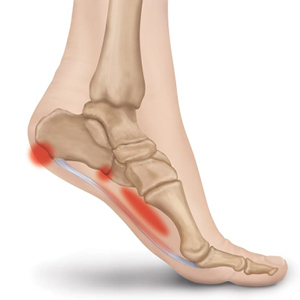

Where is your problem?
Where is your problem?
Neck + Back Shoulder Elbow
Wrist+Hand Hip Knee
Ankle + Foot Mobility
Where is your problem?
Where is your problem?
Neck + Back Shoulder Elbow
Wrist+Hand Hip Knee
Ankle + Foot Mobility
Neck + Back
Neck + Back
Neck + Back Pain
The neck and back are complicated structures designed to provide strength, support and flexibility. It is made up of over 100 joints, 220 individual ligaments and 120+ muscles. Damage to any of these structures can cause severe pain and dysfunction. Unfortunately most providers will only treat pain – yes, this includes neck and back cracking, e-stim, heat and massage. None of these treatments will fix function.
Dr. Andrew Wengert is trained in the most advanced conservative treatments for correcting problems in the muscles and joints, and offers the clinical excellence you need to recover.
Common Problems
- Stiff Neck
- Bulging Disc
- Herniated Disc
- Pinched Nerves
- Muscle Tightness
- Headaches
- Osteoarthritis
- Muscle Spasms
- Stenosis
- Sacroiliac (SI) Problems
Related Articles
The muscle spasm is not the problem! Your disc injury is!!!
Pain in the neck, upper back, or between the shoulder blades is likely from a disc problem in the neck.
Shoulder
Shoulder
Shoulder Pain
The shoulder provides mobility for most all arm and hand movements while also operating and stabilizing any pulling, pushing or lifting actions. Naturally, the joint itself is unstable to allow for such movement to occur. This can lead to muscle injuries, "wear and tear" to the joint cartilage and overuse injuries.
Dr. Andrew Wengert is trained in the most advanced conservative treatments for correcting problems in the muscles and joints, and offers the clinical excellence you need to recover.
Common Problems
- Rotator Cuff Tears
- Labrum Tears
- Herniated Disc
- Limited Mobility
- Adhesive Capsulitis (Frozen Shoulder)
- Impingement
Related Articles
Pain in the arm, specifically the bicep/tricep region is a common location for referred pain from the shoulder joint.
If you get shoulder pain with the snatch and overhead squat but not with the jerk and the press you need to check your ankle and hip mobility.
The standard of care for shoulder pain addresses symptoms and not function. This video explains why this is not a long term solution.
Elbow
Elbow
Elbow Pain
Elbow problems are the most common area of misdiagnosis and ineffective treatment by other providers. Dr. Andrew Wengert is trained in the most advanced conservative treatments for correcting problems in the muscles and joints, and offers the clinical excellence you need to recover.
Common Problems
- Tendinitis
- Chronic Elbow Instability
- Lateral Epicondylitis (Tennis Elbow)
- Medial Epicondylitis (Golfer’s Elbow)
- Elbow Arthritis
Related Articles
Wrist + Hand
Wrist + Hand
Wrist + Hand Pain
The wrist is a very complex area made up of multiple joints connecting the arm and hand together. There are many bones, nerves, ligaments, muscles and tendons that control the hand and wrists' range of motion. Problems with any one of these elements will cause surrounding structures to work overtime, resulting in a dysfunctional joint.
Dr. Andrew Wengert is trained in the most advanced conservative treatments for correcting problems in the muscles and joints, and offers the clinical excellence you need to recover.
Common Problems
Tendinitis
Carpal Tunnel Syndrome
Sprains
Strains
Arthritis
Related Articles
Elbow, Wrist, and Hand problems are commonly the result of "tight" wrist flexors.
Your carpal tunnel is just one of the places your median nerve can get stuck. Make sure the treatment you get fixes the actual problem you have.
Hip
Hip
Hip Pain
The pelvis houses both hip joints, which allow the legs to move up, down, and left to right. The hip is the most stable joint in the body, however it is susceptible to wear and tear. Hips can get overloaded when the body has too much weight to support, which can be caused by heavy load bearing. Though symptoms felt through the hip joint can actually be the result of a back problem.
Dr. Andrew Wengert is trained in the most advanced conservative treatments for correcting problems in the muscles and joints, and offers the clinical excellence you need to recover.
Common Problems
- Sciatica
- Piriformis Syndrome
- Hip Flexor Problems
- Limited Mobility
- Tightness
- Impingement
Related Articles
Hip pain when you squat is not a hip flexor problem.
Knee
Knee
Knee Pain
When people feel knee pain, there can be a problem with the knee itself, though it is often the result of a hip or ankle problem. If the ankle or hip is unstable or does not move properly, an increased load will be put through the knee resulting in damage to the knee joint.
However most providers limit their examinations to the knee itself and miss the actual cause of the problem. So when dealing with knee pain (whether that be an onset of pain overtime or an athlete suffering from a blow to the knee), a functional examination is an absolute must.
Common Problems
- Tendon Injuries
- Meniscus Tears
- Patellar Tendinitis
- Patellar Tracking problems
- Osteoarthritis
- Ligament Injuries
Related Articles
Foot + Ankle
Foot + Ankle
Foot + Ankle Pain
The foot and ankle absorb 2-5 times our body weight every step we take throughout a normal day. As a result, it is not surprising that 75% of Americans experience some type of foot and ankle pain in their life.
The bones, ligaments and muscles in the foot and ankle provide us the ability to walk, run, twist, turn and jump. An acute injury or overuse can cause damage to any of these pivotal structures. Respectively, joint damage is the cause of joint pain, therefore it is imperative to seek our care. A thorough evaluation and accurate diagnosis by Dr. Wengert is your first step back to your every day excellence.
Common Problems
Plantar Fasciitis
Sprains
Morton’s Neuroma
Stress Fractures
Ankle Mobility Problems
Related Articles
Pain on the bottom of your foot does not mean that you have plantar fasciitis.
Limited Mobility
Limited Mobility
Limited Mobility
Limited range of motion is one of the most common problems in the body. If you cannot move properly, you will do damage to your joints. So that tightness you feel or the fact that you have never been able to touch your toes matters, a lot.
"Tight does not mean Stretch!"
The most common reasons a muscle or joint can feel "tight" is adhesion. Adhesion acts like glue in your muscles and stops them from stretching the way they are supposed to. Luckily, adhesion is the most reversible problem in the musculoskeletal system, but also the most under-diagnosed.
Dr. Andrew Wengert is the only doctor in the Sarasota/Manatee County area, with the training and certifications to correctly diagnose and treat adhesion.
Limited mobility can also be from a nerve entrapment, joint damage, or a muscle that is contracting to protect an injured area. Stretching can make each of these problems worse, so forget that stretch your co-worker showed you and get the expert care your body deserves.
Common causes
Adhesion
Nerve Entrapment
Joint Damage
Related Articles
Why is good mobility so important?
Nerve Entrapments are frequently missed or misdiagnosed by doctors. As a result, many patients suffer unnecessarily. They lead to pain, nerve symptoms and limited mobility.












